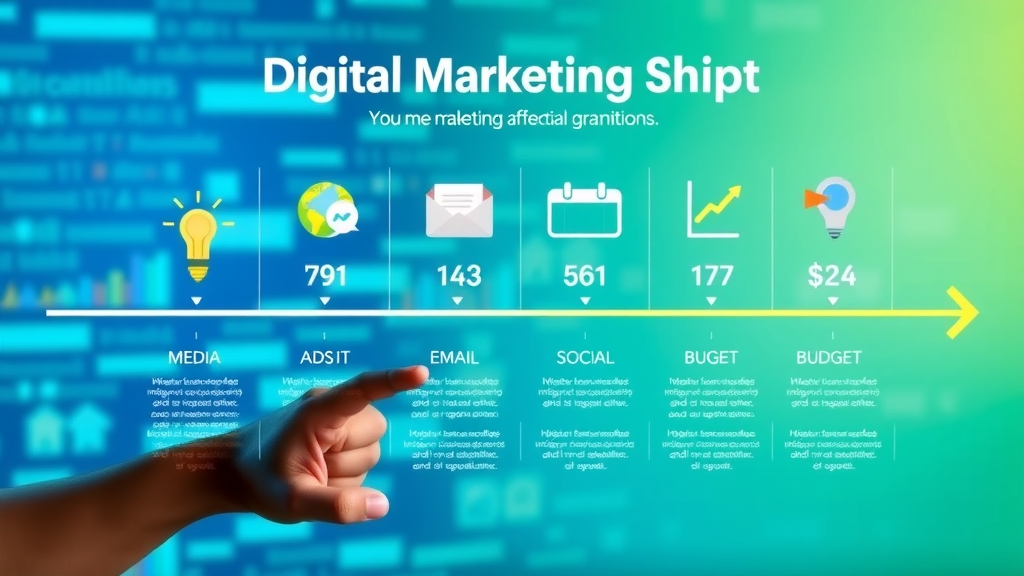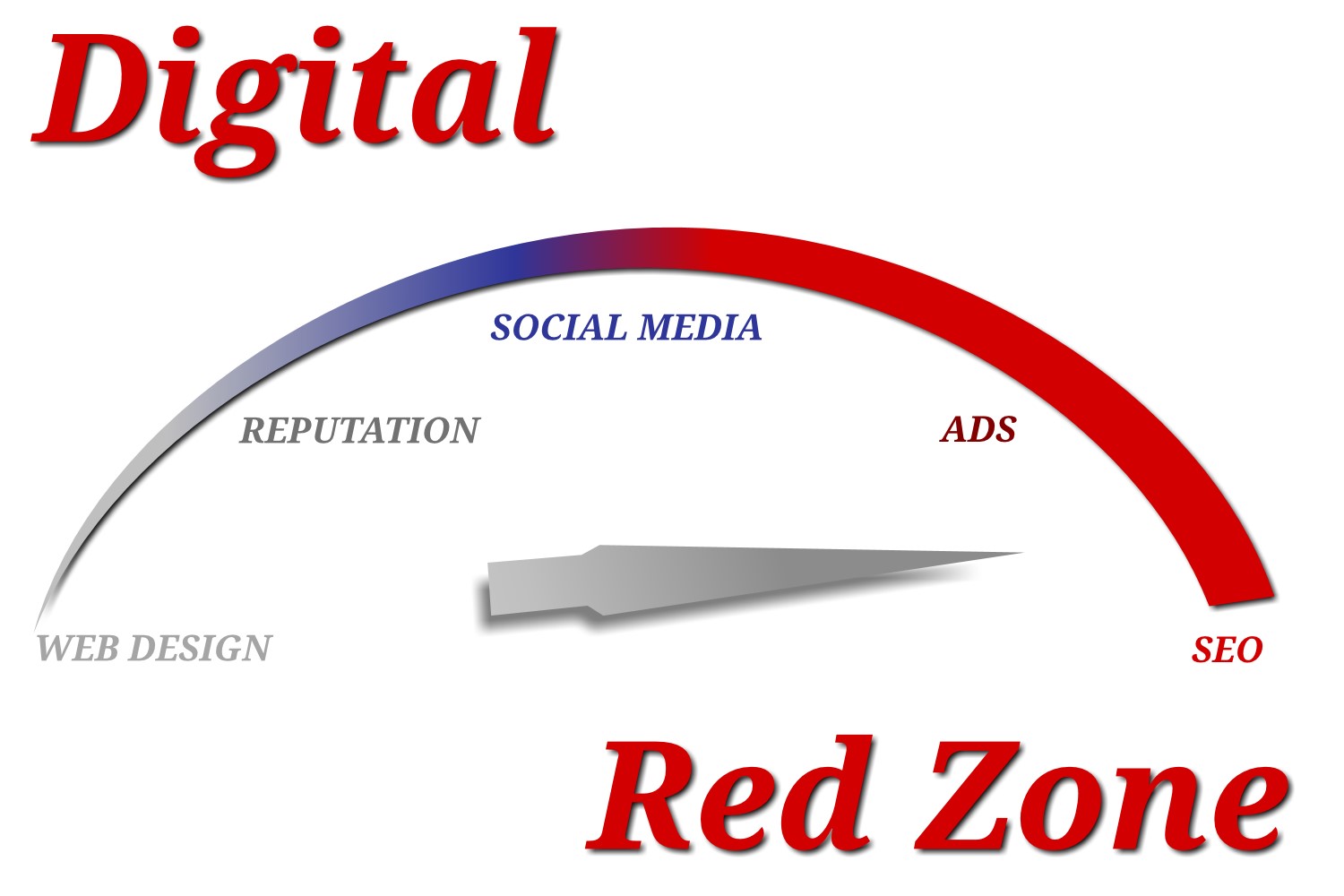What online marketing statistics Reveal About Consumer Behavior

- Did you know that over 65% of internet users discover new brands through social media platforms? This is just one of many online marketing statistics that could transform your approach to digital marketing.

How Online Marketing Statistics Uncover the Truth About Consumer Behavior
- Gain a clear understanding of why online marketing statistics are essential for making informed business decisions.
In today’s hyper-connected world, online marketing statistics are more than just numbers—they’re your blueprint for decoding actual consumer behavior. With billions of internet users interacting daily across diverse media platforms , these figures shine a light on patterns, preferences, and pain points that marketers worldwide can no longer afford to ignore. Leveraging these insights allows businesses to craft marketing strategies that precisely target what audiences genuinely want.
Real-time data from social media , media advertising , and content monitoring shows how consumers move between platforms and what motivates them to engage or buy. By drilling down into these online marketing statistics , brands can make bold, confident decisions—from choosing which media ad to invest in, to shifting marketing budgets for maximum impact. This data-driven approach minimizes guesswork, reduces wasted resources, and dramatically improves campaign ROI.
What You’ll Discover from These Online Marketing Statistics
- How consumer actions are shaped by social media marketing
- The impact of influencer marketing on purchase decisions
- Key metrics marketers need from marketing statistics
- Comparisons of digital marketing channels based on recent media ad and social media ad data
| Shift | Statistical Insight | Marketing Channel |
|---|---|---|
| Rise of Media Advertising | 60% of marketing budgets now allocated to digital media ads | Display, Video, Social Media Ads |
| Dominance of Social Media | 4.8 billion active users, 93% of marketers leveraging it for brand awareness | Social Media Platforms |
| Growth in Email Marketing ROI | Email boasts 36:1 average ROI—highest among digital channels | Email Marketing |
| Influencer Marketing Evolution | Micro-influencer campaigns up 610% in engagement rate over traditional media marketing | Influencer Marketing, Social Ads |
| Analytics-driven Budget Allocation | Brands using real-time statistics grow 2x faster than those using instinct alone | All digital marketing budgets |

Online Marketing Statistics: Impact of Social Media on Consumer Behavior
Social Media Usage: How Many Internet Users Engage With Media Platforms?
- Latest data shows 4.8 billion active social media users worldwide.
‘Over 50% of the global population is active on at least one social media platform daily’ – Digital Marketing Industry Report 2024
The sheer volume of social media engagement is staggering—over half of the world’s population logs onto these media platforms every single day. These statistics go beyond vanity metrics; they reveal a dramatic shift in how internet users discover, research, and interact with brands. For marketers, this data spells out a clear action point: if you’re not meeting your consumers on social, someone else will.
The media market is now fundamentally shaped by these user behaviors. People don’t just scroll—they’re engaging with content, forming opinions, and making purchase decisions all within these networks. This growing dominance makes social media a non-negotiable focal point in any robust digital marketing strategy.

Social Media Market Trends: Which Platforms Dominate the Media Market?
- Breakdown of user demographics, most popular social media platforms, and their engagement rates.
Not all social media platforms are created equal. Current statistics show that Facebook leads with nearly 3 billion users, followed by YouTube , Instagram , and TikTok —each with distinct demographics and engagement rates . For example, TikTok’s primarily Gen Z audience commands impressive engagement rates that dwarf those of more mature platforms.
For marketers seeking to optimize their marketing strategy , understanding where your audience spends time is crucial. The social media market has fragmented into niche communities, enabling highly targeted campaigns with unprecedented precision. Brands must analyze media market data to match content and ad types to platform-specific user preferences and maximize campaign effectiveness.
Social Media Advertising: The Rising Influence on Consumer Purchases
- Ad spend growth rates, most successful social media ad formats, and real conversion statistics.
Social media advertising is evolving at a breakneck pace. Digital media ad spend on platforms like Instagram and Facebook is projected to increase by over 15% in the next year alone. This surge is driven by diversified ad formats—such as stories, reels, and sponsored posts—which consistently deliver higher conversion rates than static display ads.
According to recent marketing statistics, video ads and interactive posts achieve the highest ROI within social feeds, with conversion rates eclipsing traditional banner ads by a wide margin. For brands aiming to influence buying decisions, social media ad campaigns offer a fast track to increased brand awareness and customer acquisition—proving that substantial media ad spend here is more an investment than a risk.
How Social Media Marketing Drives Brand Awareness and Customer Loyalty
- 93% of marketers use social media for brand exposure; loyalty statistics and illustrative campaign examples.
With 93% of marketers worldwide stating that social media is essential for elevating brand awareness , it’s clear that a vibrant social presence feeds both acquisition and retention. Consistent, value-driven engagement—like exclusive content or innovative contests—can spark customer loyalty that’s nearly impossible to replicate through other channels.
Successful campaigns illustrate the power of social media marketing. For example, user-generated content campaigns combined with strategic paid ads result in a dual boost: they not only introduce your brand to new audiences but also reinforce trust with your existing customer base. This blend of organic and paid activity makes social media marketing the backbone of modern media marketing strategies.

Influencer Marketing by the Numbers: Key Online Marketing Statistics
Influencer Marketing Statistics: Trust, Reach, and ROI
- Influencer campaigns average a 5.2% engagement rate, outperforming traditional media advertising.
One of the most compelling online marketing statistics of recent years is the meteoric rise of influencer marketing . Campaigns featuring authentic voices and community leaders consistently outperform traditional ads, boasting engagement rates as high as 5.2%. Trust and relatability are the cornerstones here—consumers are far more likely to follow recommendations from influencers they align with versus generic brand messaging.
The result? Brands experience stronger ROI, particularly when they tap into the power of micro-influencers whose tight-knit audiences are more receptive and interactive. This strategy not only extends reach but also introduces a dose of authenticity that the modern social media consumer expects.
Top Influencer Marketing Strategies According to Recent Data
- Leveraging micro-influencers: Data shows campaigns using micro-influencers generate up to 60% higher engagement rates than those with celebrity endorsements, thanks to their niche followings and perceived authenticity.
- Cross-platform promotion: Today’s savvy marketers spread influencer content across multiple media platforms —from Instagram Stories to YouTube Shorts—to boost visibility and tap into different audience segments.
- Data-driven monitoring: Real-time analytics allow brands to track influencer campaign performance, adjusting messaging and formats to maximize impact and ROI as trends evolve.

Content Marketing and Digital Marketing: Conversion and Growth Trends
Content Marketing Stats: Consumer Preferences and Effective Media Formats
- Over 70% of consumers prefer learning about products through well-crafted digital content.
Content marketing is rapidly gaining ground among marketers worldwide. According to marketing statistics, more than 70% of consumers trust informative articles, videos, and infographics over overt advertising. Well-structured digital content not only improves search engine visibility but also builds trust and engagement by addressing real consumer pain points.
The key for brands is to diversify content types—think blogs, short-form videos, and interactive guides that satisfy various learning preferences. High-quality content aligns seamlessly with digital marketing strategies to support every stage of the buying journey, from lead gen to conversion and retention.

Digital Marketing: Email Marketing Versus Social Media Performance
| Channel | Average ROI | Engagement Rate | Conversion Rate |
|---|---|---|---|
| Email Marketing | 3600% (36:1) | 18% | 4.5% |
| Social Media Ads | 250% | 3.9% | 2.1% |
While social media advertising dominates in reach, email marketing still holds the gold standard for ROI and conversion rates. Studies show that the average ROI for email campaigns is an impressive 36:1, thanks to its directness and personalization capabilities. However, social media ads shine in audience engagement, especially for brand discovery and awareness.

Marketing Budgets: How Brands Allocate Resources
- Statistics on global marketing budgets, trends in allocation to media advertising and digital platforms.
Marketing budgets have evolved rapidly with 60% now earmarked for digital avenues—primarily social media, paid search, and influencer collaborations. The shift reflects confidence in digital’s measurable returns and real-time flexibility. Notably, brands investing heavily in data and analytics report the highest ROI in annual surveys.
A growing number of marketing teams are reallocating resources away from traditional channels, like print and broadcast, to strengthen their digital marketing strategy. The outcome is smarter spend, faster pivots in response to changing media market trends, and sharper focus on high-impact touchpoints that drive both brand awareness and lead gen.
Media Advertising and Online Marketing Statistics: From Media Ad Formats to Consumer Response
Growth of Paid Media Advertising: Latest Marketing Statistics
- Projected spending for 2024, most popular ad formats, and media advertising success rates.
The media advertising landscape is on an upward trajectory, with global digital marketing spends projected to top $700 billion in 2024. Video ads, interactive stories, and native sponsored content have emerged as the most effective media ad formats—earning the highest engagement and conversion rates industry-wide.
Marketers cite agility, scalability, and robust reporting as the primary reasons for their increased investment. Data confirms media advertising’s pivotal role in driving consumer response, from immediate clicks to long-term loyalty.

Social Media Ad Strategies Backed by Data
- Optimizing ad formats for engagement: Video and carousel ads outperform static images in most social channels, according to the latest studies.
- Audience targeting based on platform data: Advanced analytics help brands hone in on high-value segments in the social media market for greater ROI.
- Adapting creatives for mobile platforms: Over 80% of engagement now happens on mobile, making platform-specific creative design paramount.

Lead Gen and Search Engine Trends in Digital Marketing
- How online marketing statistics reveal the best platforms and strategies for lead generation and search engine optimization.
Lead gen and search engine trends remain hot topics among marketers as competition intensifies. Data reveals that organic search still drives a substantial share of qualified leads—about 53%, according to recent surveys—outpacing most paid tactics. However, an integrated strategy combining SEO with social media advertising and email nurturing delivers the highest overall conversion rates.
Regularly revisiting marketing statistics helps brands pinpoint their best lead generation channels and search strategies, adapting quickly to shifts in the digital marketing landscape for unmatched growth and relevance.
Shocking Online Marketing Statistics That Will Change Your Strategy
- Fastest-growing segments in social media marketing: TikTok ad spend grew 200% year-over-year, capturing younger audiences at scale.
- Consumer trust factors by statistics: 78% of consumers rely on peer reviews and influencer input over brand-produced ads.
- Unexpected shifts in internet user behavior: 65% of smart speaker owners now use voice search for product research.
- Surprising facts about email open rates and content preferences: Personalized emails see 29% higher open rates than generic campaigns.
Expert Insights on Using Online Marketing Statistics in Decision-Making
‘Decisions anchored in real-time data outperform gut feelings every time.’ – Leading Digital Marketing Analyst
The value of timely, relevant data cannot be overstated in today’s fast-paced marketing industry . Industry leaders agree that “data-first” strategies deliver measurable gains—helping pinpoint trending marketing channels, adjust marketing budgets with precision, and outperform competitors through agility and insight.
Brands making critical decisions based on online marketing statistics see faster growth, better consumer alignment, and a culture of continuous innovation.
People Also Ask: What Are the Statistics of Digital Marketing?
- Digital marketing spends are predicted to grow by over 12% annually, with video content seeing the fastest engagement increases.
Current digital marketing statistics highlight rapid expansion in marketing budgets, with spending on advanced channels like programmatic ads and influencer partnerships rising fastest. Engaging video content now produces the highest ROI across online platforms, making multimedia a top priority for brands aiming to stay ahead.
People Also Ask: What Is the 70 20 10 Rule in Digital Marketing?
- 70% standard content, 20% innovative or experimental content, and 10% riskier content; this balance is widely cited among digital marketing experts.
The 70 20 10 rule encourages marketers to allocate content resources in a way that maintains consistency (70% core content), experimentation (20% innovative formats or channels), and bold, high-risk/high-reward tactics (10%). This balance helps brands adapt quickly while managing resource constraints and supporting long-term growth.
People Also Ask: How Effective Is Online Marketing?
- Surveys indicate 80% of businesses report increased ROI from integrated online marketing strategies compared to traditional advertising.
Digital marketing’s effectiveness is widely recognized; businesses embracing integrated online strategies—uniting media ads, social media marketing, and email—generally outperform those relying on siloed or outdated techniques. Tracking marketing statistics regularly further accelerates the optimization cycle for even greater returns.

People Also Ask: What Is the Success Rate of Digital Marketing?
- Latest statistics suggest a 45% average increase in customer retention and 30% higher conversion rates for brands using digital marketing tools.
Brands leveraging digital marketing tools report measurable, lasting results. On average, these efforts yield nearly double the customer retention rates and 30% more conversions than offline methods—make digital foundational to every growth strategy.
Frequently Asked Questions About Online Marketing Statistics
- Which online marketing statistics are most relevant for small businesses?
Small businesses should focus on stats about social media engagement rates, cost-per-click data for paid ads, and local search behavior among internet users to optimize smaller marketing budgets. - How often should you review your marketing statistics for strategy updates?
Industry experts recommend monthly reviews for ongoing campaigns and deep-dives after major launches to keep strategies fresh and focused on high-performing channels. - What sources offer the most trustworthy data?
Rely on industry reports, platform-specific analytics (such as Google Ads and Facebook Insights), and reputable third-party research agencies to ensure accuracy and reliability.
Key Insights and Actionable Takeaways from the Latest Online Marketing Statistics
- Base your digital marketing strategy on current marketing statistics.
- Allocate marketing budgets to high-performing media platforms.
- Use influencer marketing and social media advertising to maximize reach and engagement rates.
Ready to Harness Online Marketing Statistics for Your Brand’s Success?
- Put these online marketing statistics to work—review your strategy, invest in data-driven platforms, and watch your campaign results transform.
A concise explainer video that highlights the most impactful online marketing statistics covered in this article, using animated graphs, engaging transitions, and voiceover to illustrate trends.
- Industry leaders break down emerging trends in the media market and offer real-world examples of statistics in action.
Conclusion
Now is the time to integrate online marketing statistics into every decision—review your marketing strategy, pivot budgets to winning channels, and monitor real-time data for accelerated brand growth.
Sources
- https://www.statista.com – Example Site
- https://www.hootsuite.com/research – Example Site
- https://www.hubspot.com/marketing-statistics – Example Site
- https://sproutsocial.com/insights/data/ – Example Site
- https://www.digitalmarketing.org/ – Example Site
- https://contentmarketinginstitute.com/research – Example Site
To deepen your understanding of consumer behavior through online marketing statistics, consider exploring the following authoritative resources:
-
“20 Digital Marketing Statistics to Know in 2025” : This article provides insights into key trends, such as the dominance of mobile devices in internet traffic and the significant role of social media in brand discovery. ( northone.com )
-
“Digital Marketing Industry Statistics: ZipDo Education Reports 2025” : This report offers a comprehensive overview of social media marketing trends, including advertising spending projections and the impact of influencer marketing on consumer decisions. ( zipdo.co )
By reviewing these resources, you can gain valuable insights into current digital marketing trends and their influence on consumer behavior.
